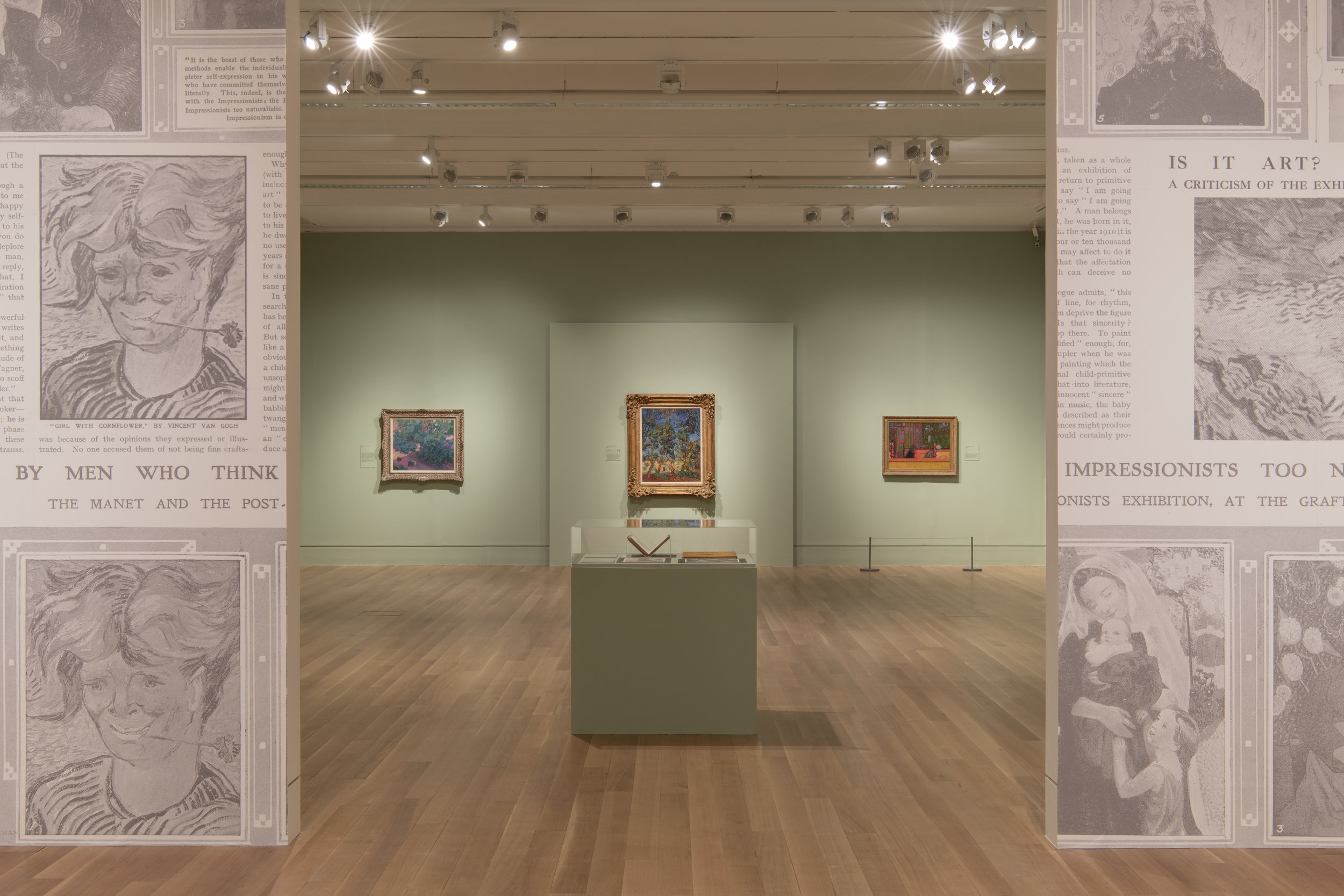Van Gogh and Britain Exhibition at Tate Britain: Two Highlights
Van Gogh In Britain 2019 exhibition installation view, Tate Britain (27 March 2019 - 11 August 2019). ©Joe Humphrys, Tate Photography
The EY Exhibition presents Van Gogh and Britain in this retrospective show highlighting the relationship the artist forged with Britain and his resonating influence with British artists that have followed. This is the first exhibition calling on this correlation between the two.
45 Van Gogh paintings spread out over multiple rooms in addition to works by other notable artists who inspired the Dutch artist while he lived in London and, likewise, painters who have since his death taken inspiration from his very particular style and palette. We also see works by his friends around whom he practised his art, highlighting the artist’s sensitivity to modern art.
But what caught our attention most is the two paintings notable to Van Gogh’s last days at Saint-Paul de Mausole asylum in Saint Rémy. Rarely loaned and lesser-known compared to his Sunflowers or Starry Night, these paintings highlight the artists meticulous working process and his fixation on ideas. He would hold onto inspiration for years, knowing he would come back to it to complete at a later time and when he could outlet his views.
Van Gogh In Britain 2019 exhibition installation view, Tate Britain (27 March 2019 - 11 August 2019). ©Joe Humphrys, Tate Photography
He arrived in London in May of 1873, aged 20 and for several years worked as a trainee art dealer until 1876. In these years Van Gogh immersed himself in British culture and several particularly influential works accompany that of the artist’s at the Tate, including works by John Constable and John Everett Millais. We also see his love of British writers from the likes of William Shakespeare to Christina Rossetti, but most notably, Charles Dickens of whom he reflected by having said
‘My whole life is aimed at making the things from everyday life that Dickens describes’.
Vincent van Gogh (1853 – 1890)
The Prison Courtyard
1890
Oil paint on canvas
800 x 640 mm
© The Pushkin State Museum of Fine Arts, Moscow
On loan from The Pushkin State Museum of Fine Arts in Moscow is Van Gogh’s The Prison Courtyard. Painted in 1890, this exemplifies the impact Dickens had on the artist. Though originally based off a print of Newgate Prison by Gustave Doré (which is displayed alongside his personal copy), we can appreciate that Van Gogh reminisced Dickens’ ‘A Visit to Newgate’ when painting this in the last year of his life.
Filled with connotations of despair and feelings of entrapment, even the orientation of the artwork suggests confinement as it is painted vertically, highlighting the limited space for the numerous figures walking aimlessly in a circle and suggesting repetition of activity and perhaps mental state.
What is most curious about this painting is that amongst the gloomy atmosphere of the prison courtyard is a hint of hope in the form of two butterflies. Painted in his trademark yellow, we can take from this that the artist felt some aspiration in the worst time of his life.
Vincent van Gogh (1853 – 1890)
Sorrowing old man ('At Eternity's Gate')
1890
Oil paint on canvas
810 x 650 mm
Collection Kröller-Müller Museum, Otterlo
Also completed that same year and exhibited here is Sorrowing Old Man (‘At Eternity’s Gate’) loaned from the Kröller-Müller Museum, Otterlo. Like many of his paintings done at a later date, this too was based off an earlier lithograph which was also based off another pencil drawing. The original studies a pensioner and war veteran Adrianis Jacobus Zuyderland made in 1882 and the inspiration to this was Hubert von Herkomer's Sunday at the Chelsea Hospital that Van Gogh had seen in 1875.
This original idea would stay with Van Gogh up to his days at St. Rémy where he recreated it as oil on canvas and, like the ‘The Prison Courtyard’, while filled with melancholy there is hope too. He reflects:
“It seems to me that a painter has a duty to try to put an idea into his work. I was trying to say this in this print — but I can’t say it as beautifully, as strikingly as reality, of which this is only a dim reflection seen in a dark mirror — that it seems to me that one of the strongest pieces of evidence for the existence of 'something on high' in which Millet believed, namely in the existence of a God and an eternity, is the unutterably moving quality that there can be in the expression of an old man like that, without his being aware of it perhaps, as he sits so quietly in the corner of his hearth. At the same time something precious, something noble, that can’t be meant for the worms. ... This is far from all theology — simply the fact that the poorest woodcutter, heath farmer or miner can have moments of emotion and mood that give him a sense of an eternal home that he is close to.”
The exhibition runs from 27th March-11th August 2019 at Tate Britain. More information here.




